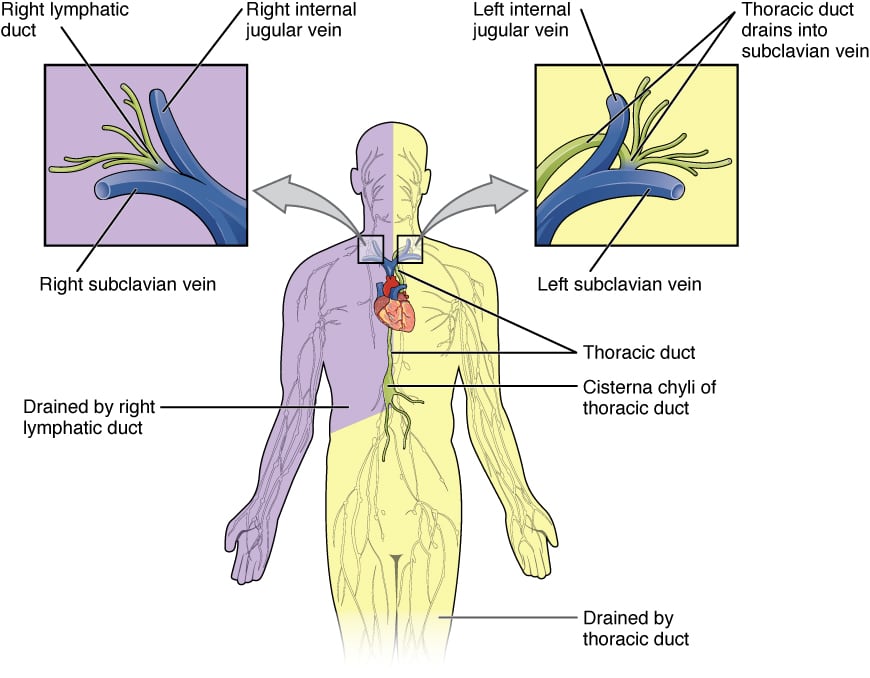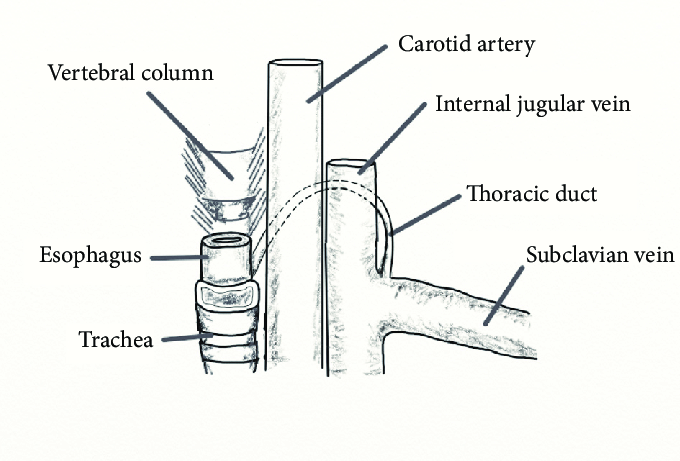It is important to remember the main lymph nodes and their drainage areas. They help in the diagnosis of cancers and infectious diseases. Sentinel node is the first node that drains an area within a group of lymph nodes, hence, the first node which will be involved by cancer. Sentinel lymph node biopsy is of utmost importance in the early detection of cancerous growths. It is done by injecting a blue dye or radioactive tracer into the drainage area. The first node that takes up the dye or tracer is the sentinel node.
There are 2 major groups - superficial and deep.
Superficial nodes
These have a T shaped arrangement, being situated just below the inguinal ligament and along the great saphenous vein. They drain superficial structures i.e. located above the deep fascia. Areas include abdominal wall below the umbilicus, lower limb except posterolateral area of calf and dorsolateral foot, external (NOT internal) genitalia, lower part of vagina, vulva, scrotum and anal canal, perineum and cornu of uterus.
Deep nodes
These are located medial to the femoral vein within the femoral sheath. Cloquet’s node is the most superiorly located in this group just under the inguinal ligament. Deep inguinal nodes drain the deep lymphatics of the distal lower extremity and perineum including the glans penis and clitoris. They drain into the external iliac lymph nodes and finally into paraaortic nodes.
Depending on the part, the lymphatic drainage changes. Upper ⅔ of the vagina drains into external and internal iliac lymph nodes while lower ⅓ drains into superficial inguinal lymph nodes. Most of the fundus of the uterus drains into pre and paraaortic nodes and the part along the round ligament drains into the superficial inguinal nodes. Cornu drains to superficial inguinal nodes, body drains mainly into the external iliac and lumbar nodes while cervix drains to the external and internal iliac nodes.
Lymph from the testes and epididymis drains into para aortic / lumbar lymph nodes. Seminal vesicles drain into external and internal iliac lymph nodes. Lymphatics from the prostate drain mainly to internal iliac and some end in external iliac lymph nodes.
Forehead and anterior part of face drain mainly to submandibular and few to buccal lymph nodes. Lateral part of face and lateral parts of eyelids drain to parotid nodes. Lower lip and chin drain to submental lymph nodes.
Following is a list of them:
| Part of GIT | Draining lymph nodes |
|---|---|
| Esophagus | Mediastinal lymph nodes |
| Stomach, pancreas, liver, spleen, upper duodenum | Celiac lymph nodes |
| Lower part of duodenum (distal to major duodenal papilla), jejunum, ileum, colon up to the proximal ⅔ of transverse colon | Superior mesenteric nodes |
| Distal ⅓ of transverse colon to upper rectum | Inferior mesenteric lymph nodes |
| Lower part of rectum, anal canal above pectinate line | Internal iliac nodes* |
| Anal canal below pectinate line | Superficial inguinal nodes |
*The bladder drains to internal iliac nodes (finally into para aortic) while kidneys, adrenals and upper part of renal collecting system drain directly into para aortic nodes.
Lymph from the breast is drained from lateral parts including superior, lateral and inferior quadrants and nipple to the axillary lymph nodes. They receive close to 75% of drainage from the breast. Medial quadrants drain to the parasternal/ internal mammary lymph nodes.
It begins at the level of the second lumbar vertebrae, as the dilated cisterna chyli. It enters the thoracic cavity at the aortic opening of the diaphragm. It passes through the posterior and superior mediastinum, finally draining into the junction of the left subclavian vein with the internal jugular vein at the base of the neck. Abdominal and thoracic parts of the thoracic duct show active peristalsis. It carries lymph (chyle) from all areas of the body except those covered by the right lymphatic duct (see below).


Cervical course of the thoracic duct. The thoracic duct enters the neck lateral to the esophagus, ascending superiorly and laterally behind to the carotid and internal jugular vein before turning inferiorly and anteriorly to join the venous circulation at the confluence of the internal jugular vein and subclavian vein.
It drains lymph from the right side of the head and neck, right upper extremity, right side of the thorax, right lung, right side of the heart and a part of the liver. It opens into the right subclavian vein.
Sign up for free to take 17 quiz questions on this topic